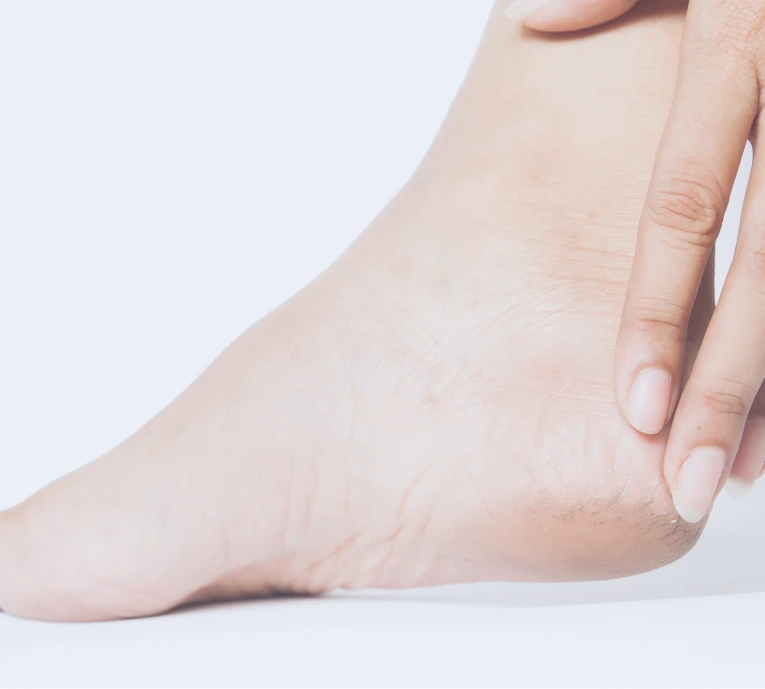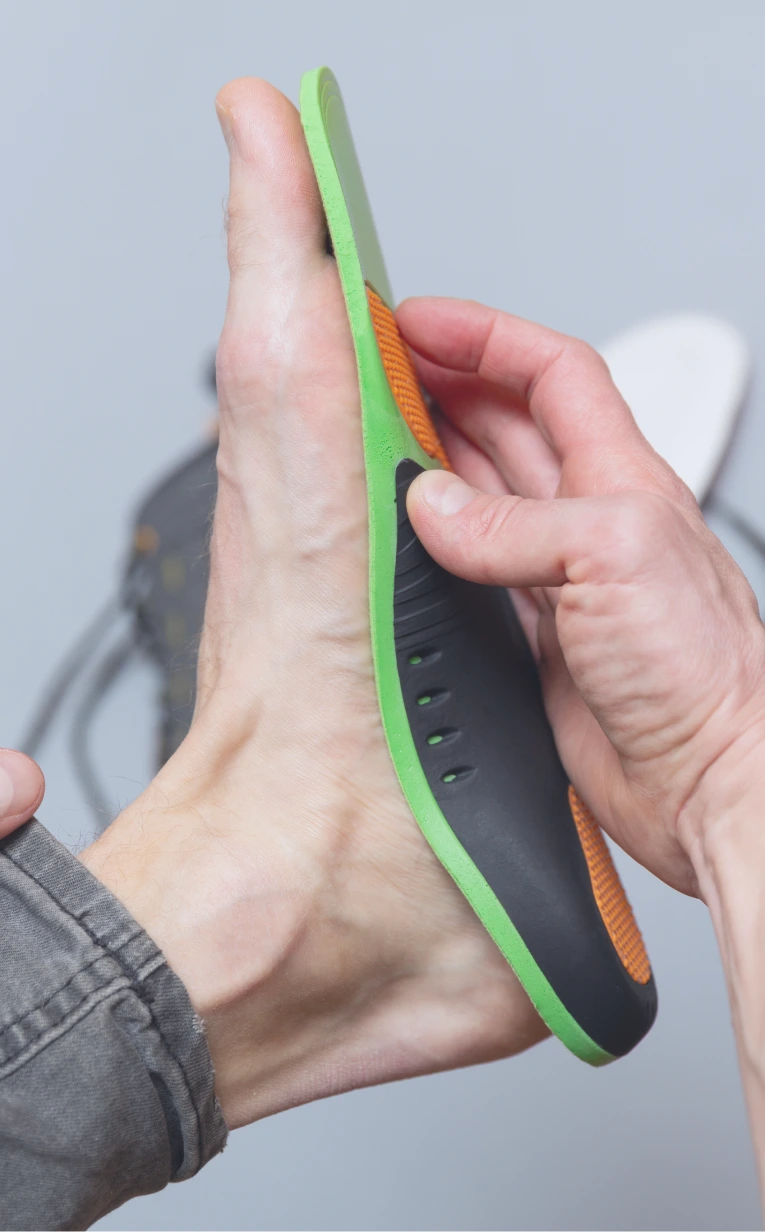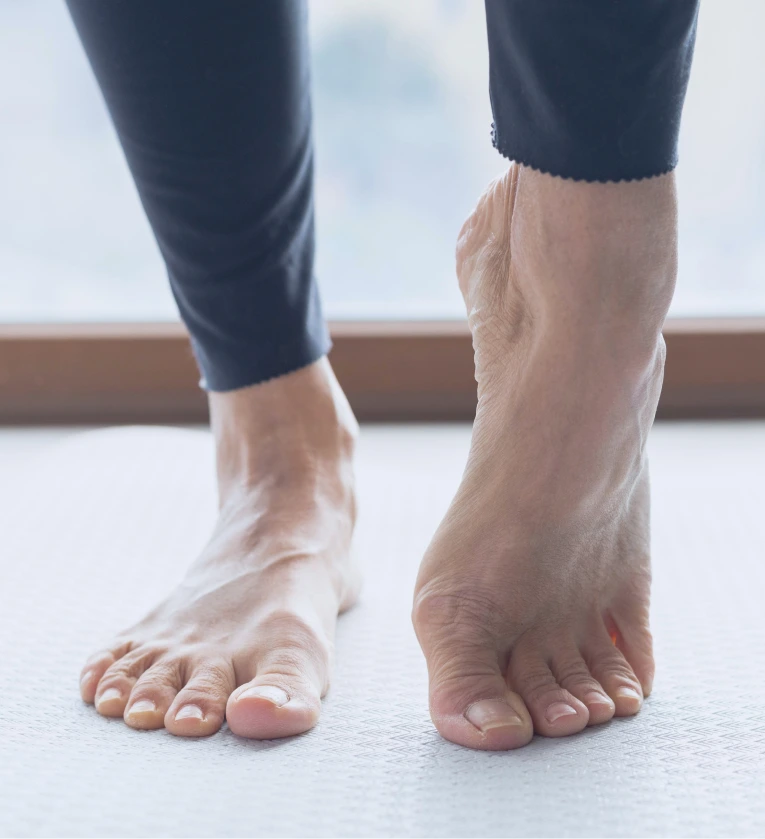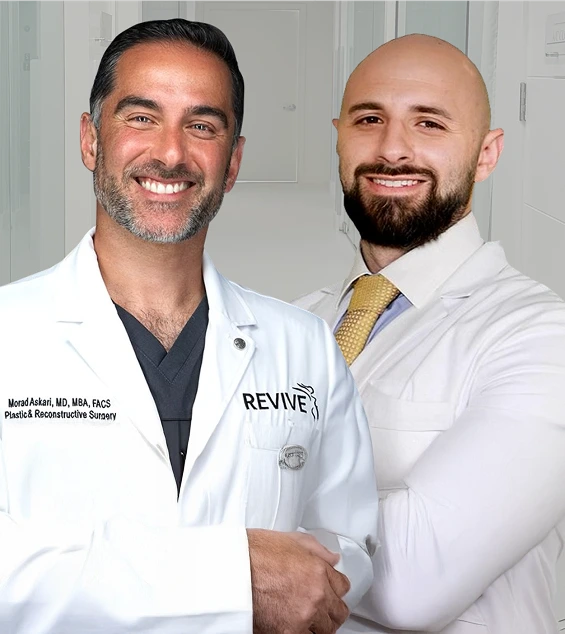
Plantar fasciitis occurs when the thick band of tissue that runs along the bottom of the foot becomes inflamed or irritated. This tissue, known as the plantar fascia, supports the arch and connects the heel bone to the toes. Conditions such as flat feet can increase strain on this band, often causing pain near the heel. Repetitive stress or overuse, sometimes linked to weakness in the calf muscle, may contribute to small tears or stress fractures in the tissue, leading to discomfort and difficulty walking.

Night splints are often recommended for patients experiencing pain caused by plantar fasciitis, especially during the first steps in the morning. These devices gently stretch the plantar fascia and calf muscles while you sleep, helping to reduce stiffness and prevent the thick band of tissue from tightening overnight. Night splints can provide relief and support the healing process by keeping the foot in a flexed position.
As a non-surgical treatment, custom orthotics are designed specifically to fit the contours of your feet and support the arch. These inserts help distribute pressure more evenly across the foot, reducing strain on the plantar fascia. Custom orthotics can improve foot function and decrease discomfort during daily activities by providing additional cushioning and alignment.
MLS laser therapy is an advanced, non-invasive procedure that treats plantar fasciitis by targeting the painful inflammation in the heel area. This therapy uses specific wavelengths of light to penetrate deep into the tissues, promoting faster healing and reducing swelling. MLS laser therapy helps alleviate pain and accelerates recovery by stimulating circulation and cellular repair.
Extracorporeal shockwave therapy is a non-invasive method that relieves pain in the affected area by stimulating the formation of new blood vessels and encouraging the repair of connective tissue. This treatment also has an anti-inflammatory effect, helping to reduce swelling and promote healing of the plantar fascia. It is often used when conservative measures have not provided sufficient relief.
In severe cases where other treatments have failed, plantar fascia release may be recommended as a surgical treatment option. This procedure involves partially cutting the plantar fascia near the heel bone to relieve tension and reduce pain. Surgery is typically reserved for chronic cases and aims to restore function and alleviate persistent discomfort.

After plantar fascia release, recovery involves a carefully managed healing process to ensure the best possible outcome. Most patients wear a walking boot or cast for several weeks to protect the foot and allow the tissue to heal properly. Physical therapy usually begins a few weeks after surgery to help restore strength, flexibility, and mobility. While individual recovery times vary, most patients gradually return to normal activities within three to six months, with ongoing improvements as the healing process continues.
When considering treatment for plantar fasciitis, identifying the right candidates is essential for effective care. Candidates typically include individuals who have experienced symptoms for varying durations or face specific challenges related to their condition.

Patients are encouraged to discuss treatment plans and pricing with Dr. Oganesyan to find an option that suits their needs and budget.

Yes, untreated plantar fascia injuries can cause chronic discomfort and may lead to changes in gait, affecting your knees, hips, and back over time. Early treatment helps prevent these complications and promotes proper foot function.
High-impact activities such as running, jumping, or standing for prolonged periods on hard surfaces can aggravate heel pain and affect the Achilles tendon. Modifying these activities during treatment is essential to allow healing and reduce inflammation.